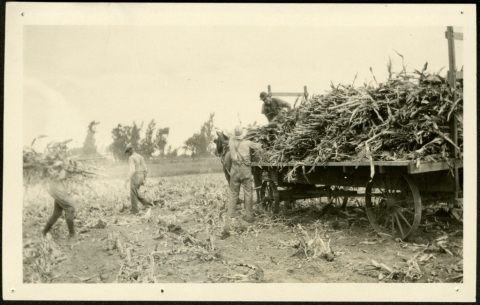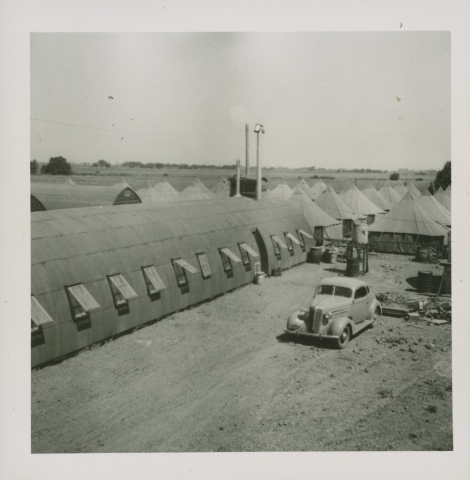The California Agricultural Resources Archive (CARA) team has made great progress in recent months to digitize and make accessible the UC Cooperative Extension Archive. Working in collaboration with the San Joaquin County Historical Society and Museum, we digitized 1,051 photographs as part of the University of California Agricultural Cooperative Extension, San Joaquin County, Collection.
Included in this set of photographic material are sixty-eight nitrate negatives. A type of cellulose film in production from the late 1800s to the 1950s, nitrate is especially prone to deterioration and highly flammable when deterioration is underway. Nitrate is exceedingly rare in archival collections but when present, it is important that proper handling and storage techniques are followed so that it does not pose a danger to people and surrounding collections. Due to the unique conditions of nitrate film, we sent this material to Gawain Weaver Art Conservation in Marin County for digitization. The film was placed in a freezer located in the UC Merced Library upon return for long-term storage.


Storing nitrate negatives in frozen conditions ensures that the original documents remain accessible for years to come. The remaining photographic materials are prints and were digitized in-house at the library by UC Cooperative Extension Project Digitization Coordinator Jonathan Wilcox, as well as several student assistants.
Featured below is an assortment of photographs found in the University of California Agricultural Cooperative Extension, San Joaquin County, Collection. Spanning the years 1917 through 1991 (though many are undated), the images found in this collection present events such as home and farm demonstrations and 4-H activities, summer camps and livestock competitions.
A photograph from 1920 shows a large Farm Bureau meeting to cultivate the organization. Another photograph from 1920 depicts a group of women posing in front of their clothing project, one of the home economic programs headed by UCCE.
Two prints from 1922 illustrate farm demonstrations and cooperative projects as farm advisors worked to deploy techniques generated at the agricultural experiment stations throughout rural communities. Other images show 4-H activities, including a summer camp scene in which young people enjoy time at Lake Strawberry.
The years during WWII experienced labor shortages across the country and some of the images convey the lack of field workers in the Central Valley in the mid-1940s. Both farm workers from Mexico and students from across the state were recruited to toil the fields during the war.

Development of Farm Bureau Organization annual meeting, 1920


Community silo filling, O. R. McGee Ranch, Ripon, 1922

Hog feeding demonstration, G. A. Grant, Ripon, 1922


Campers swimming, Camp San Stanisquin, Lake Strawberry, 1929

Mobile farm labor camp near Manteca, California, for housing Mexican national farm workers, 1943

Student volunteer peach cutters from Stockton, 1944
To see the 1,051 images digitized in this collection, visit this link!

